JFrog Introductioon
Artifactory is a product by JFrog that serves as a binary repository manager.
The binary repository is a natural extension to the source code repository, in that it will store the outcome of your build process, often denoted as artifacts.
-
Java: jar, ear, war etc has Maven and the official MavenCentral. There are many other package managers that will use the maven binary repository format as well (ivy, gradle etc).
-
.Net: nuget for .NET components (DLL and EXE) but can also be used as a distribution mechanism under windows thorugh systems like Chocolatey. Newer versions of Powershell can also leverage this to distribute powershell modules though the powershell gallery of which one could build a local distribution with a binary repository and a repository in nuget format. Also check OneGet if Windows distribution management is of interest to you.
-
JavaScript : we have npm which is one of the most popular, will require nodejs.
-
python : there is pip and the official package index pypi, which one can also create a local instance through binary repository that will support the format.
Github vs Artifactory
Git is used for source code and Artifactory is used for the binaries which go
with the source code.
The difference between source code repository and binary repository was to think
of it like: Github or Bitbucket is useful to maintain all 'code' Jfrog
Artifactory is useful to maintain the built 'binary'
Uses
-
Reduce number of downloads from remote repositories, this can save not only bandwidth but also time.
-
Improve build stability since you are less dependent on external repositories
-
Become effective platform for exchanging binary artifact within and beyond your organization without the need of building the source
Features
-
Reliability: As a local proxy to the outside world, Artifactory guarantees consistent access to the components needed by your build tools.
-
Efficiency: Remote artifacts are cached locally for reuse, so that you don’t have to download them repeatedly.
-
Security: Advanced security features give you control over who can access your artifacts, and where they can deploy them.
-
Stability: Supports large load bursts with extremely high concurrency and unmatched data integrity.
-
Automation: Automate all aspects of artifact management using a powerful REST API.
JFrog Windows Installation
Artifactory is a repository manager that allows you to store and retrieve artifacts, such as dependencies or package files. It is like a local repository in the organization
Download the JFrog artifactory .zip folder from https://jfrog.com/open-source/
Extract the .zip folder & Go to the app\bin folder and execute
artifactory.bat
Open browser hit : http://localhost:8081/ . Login with below cred’s
#The default administrator user is:
username: admin
password: password
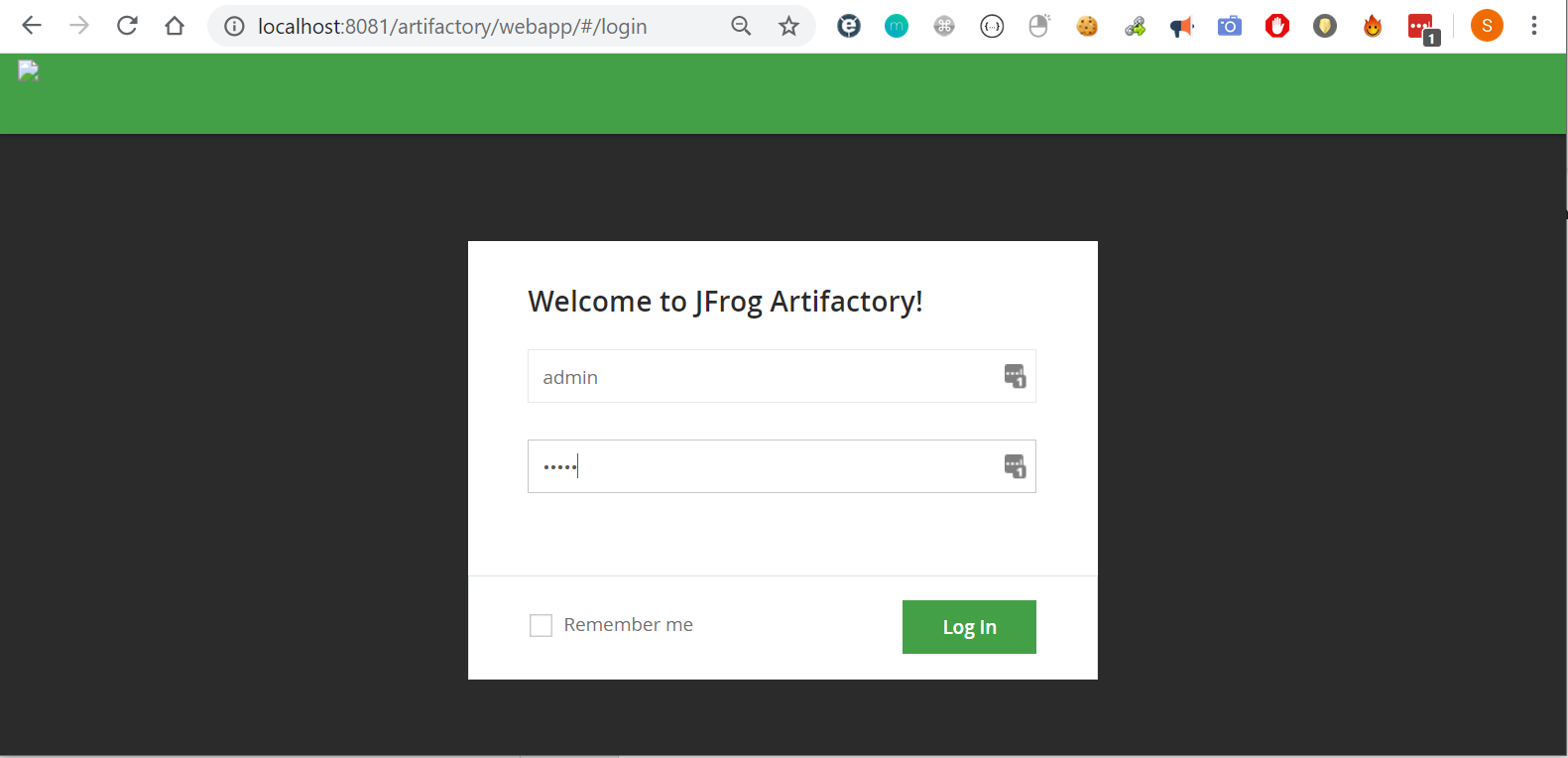
If you below error while starting JFrog
Registration with router on URL http://localhost:8046 failed with error: UNAVAILABLE: io exception. Trying again
If you see above error, we need to update JFrog\var\etc\system.yaml file, with below content
shared:
node:
ip: 127.0.0.1
You can create New Users by going,
admin > Security > users > Click on NEW from Users management window > Add
new user>Save

JFrog – Free Cloud
1.Go to JFrog Website : https://jfrog.com/start-free/
2.Choose one of the cloud platform
3.Fill The form, its Free
4.They will give you a personel domain https://<username>.jfrog.io/ to login

JFrog – Maven Repository Creation
JFrog – Maven Repository Using Quick Setup – Recommended
Top Admin Menu > Create Repositories > Quick Setup
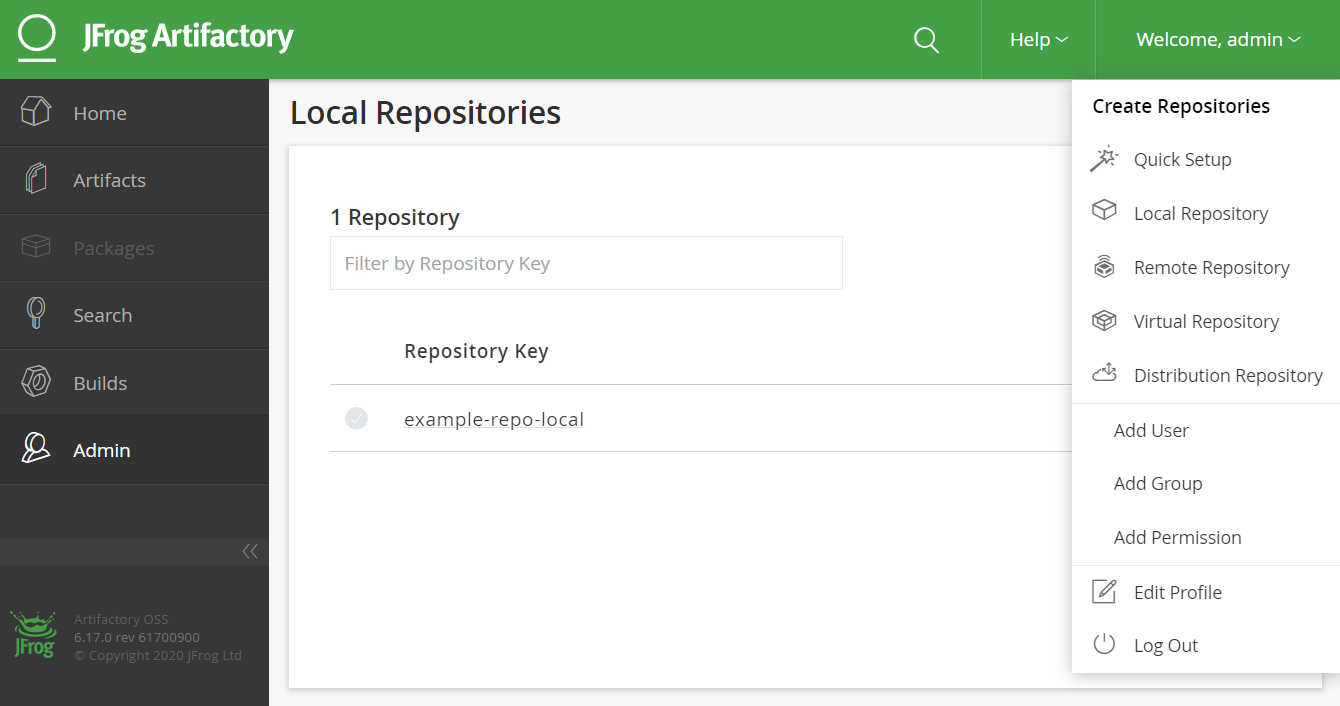
Select : Maven > Create

Click on Artifacts. We mostly use -libs-release-local” to store maven artifacts
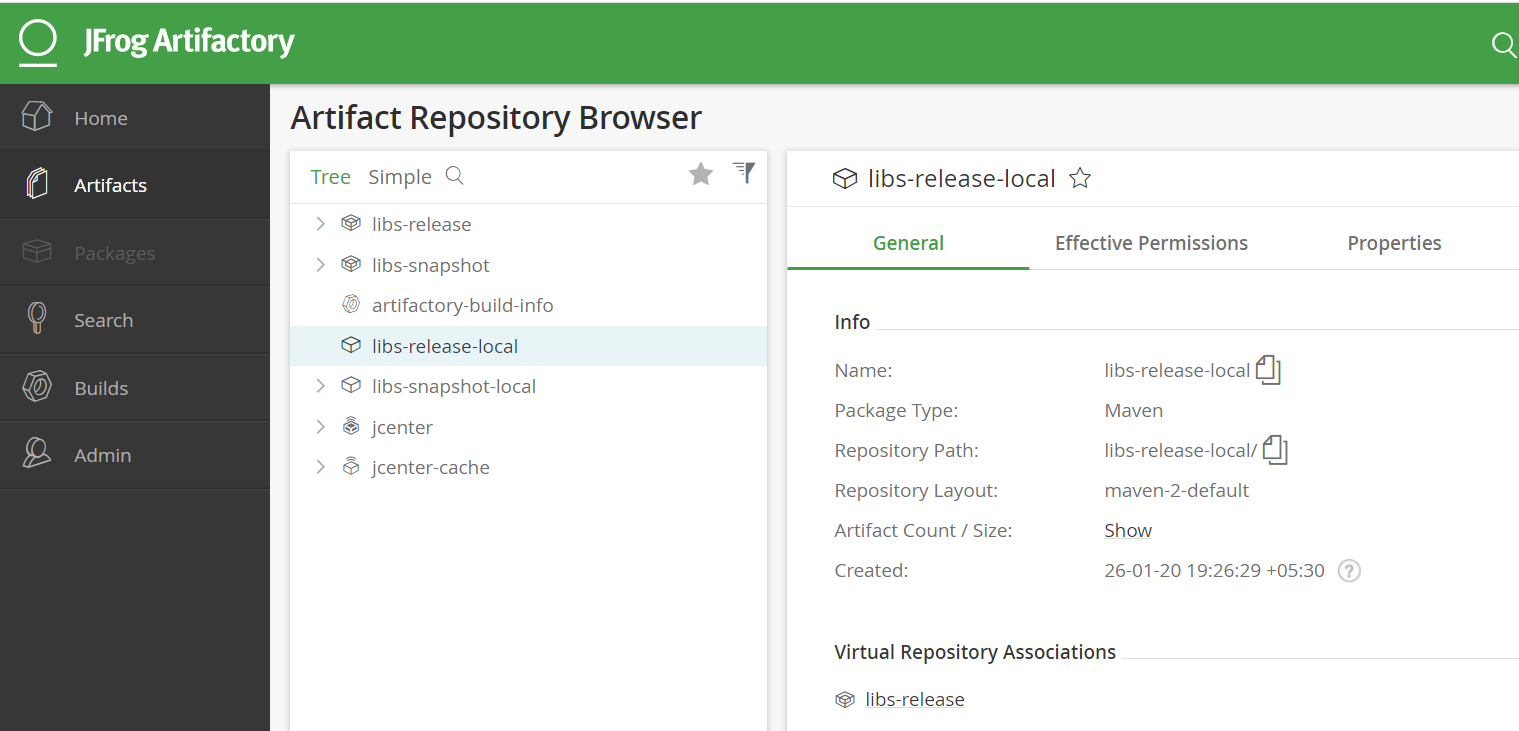
JFrog – Maven Repository manually
We have to create “Local repository” to store package files created by the Jenkins/Maven.
Go to Admin > Repositories > Local > New > Select : Maven
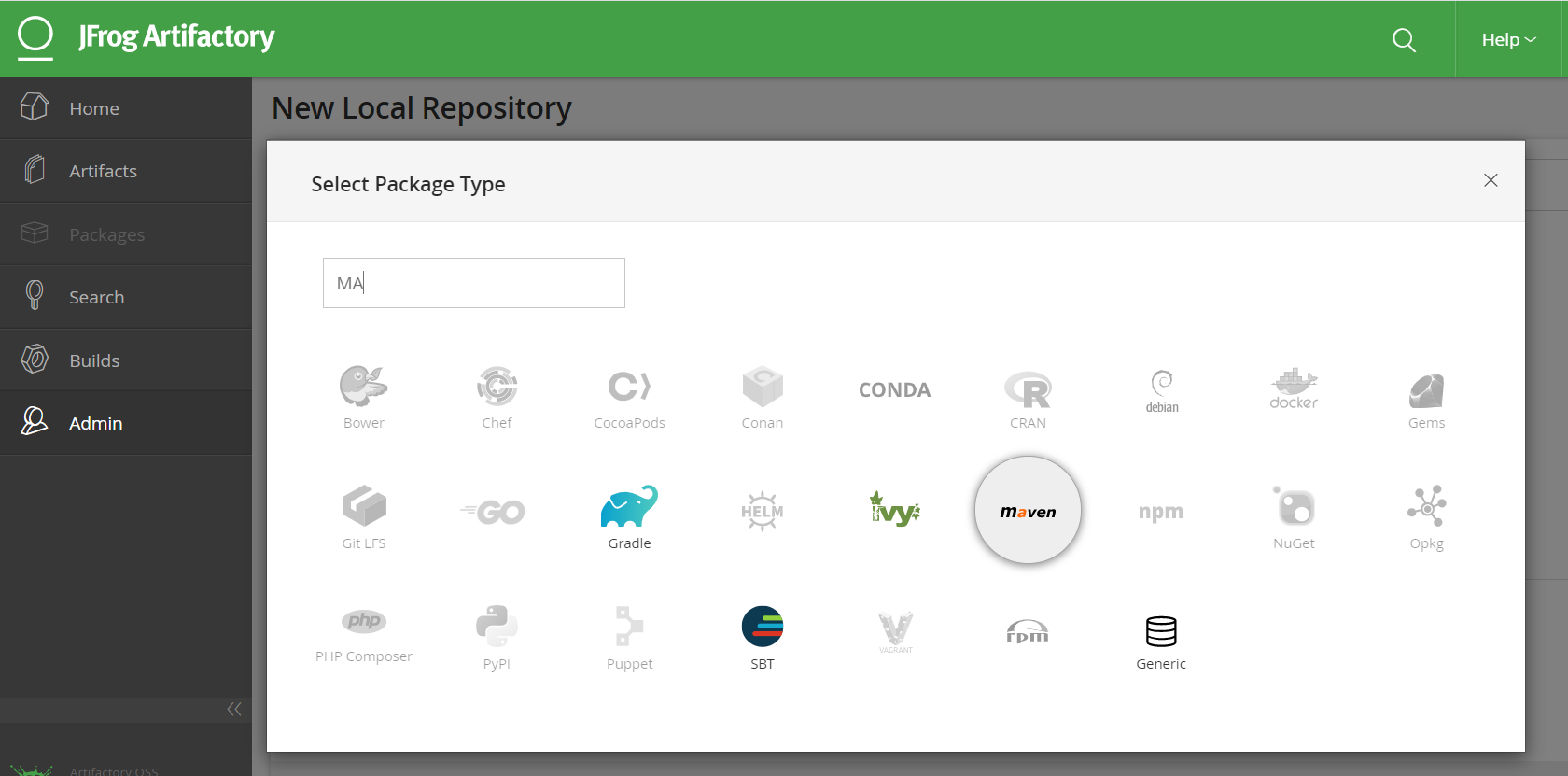
Enter : Repository Key : Maven-artifacts (for example) > Save &Finish
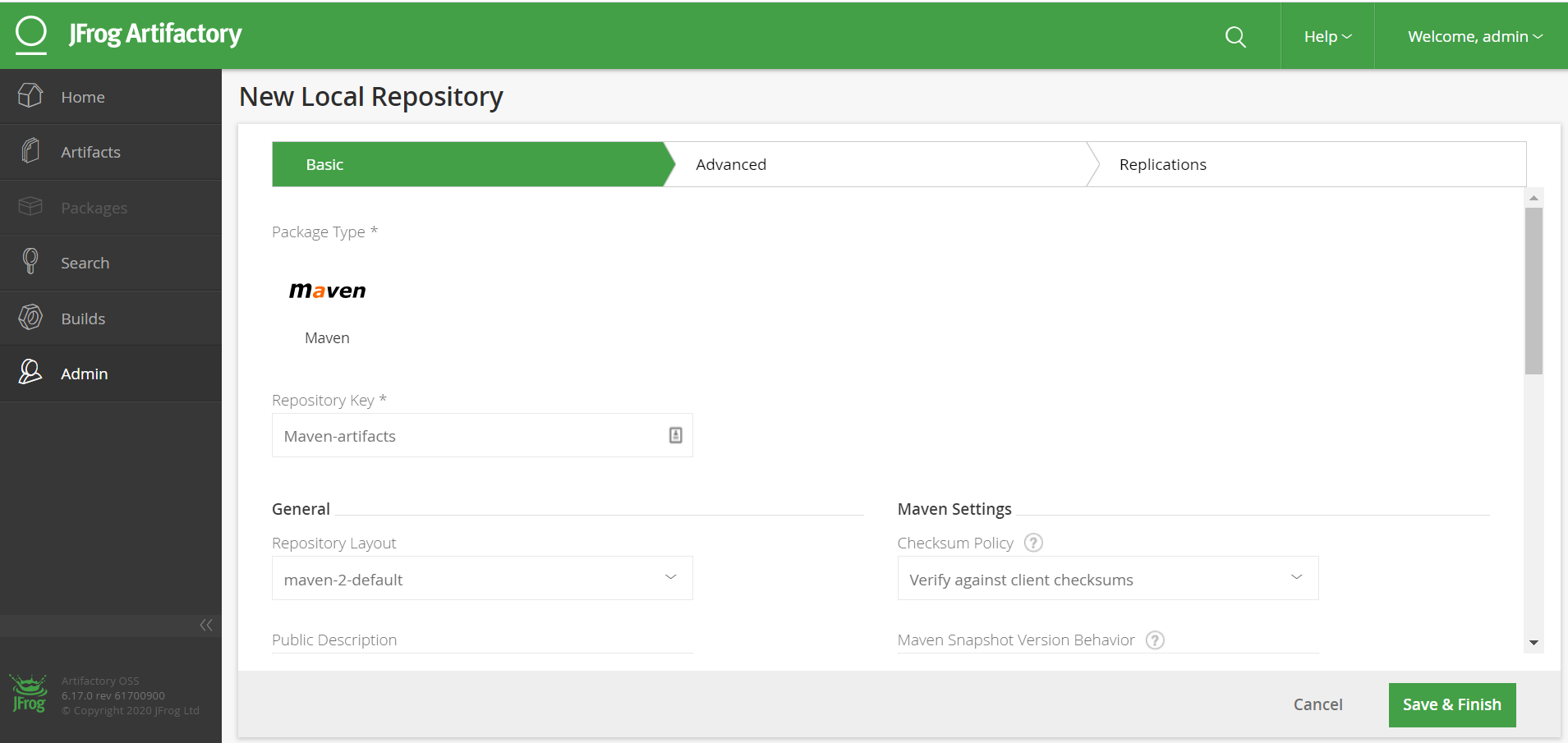
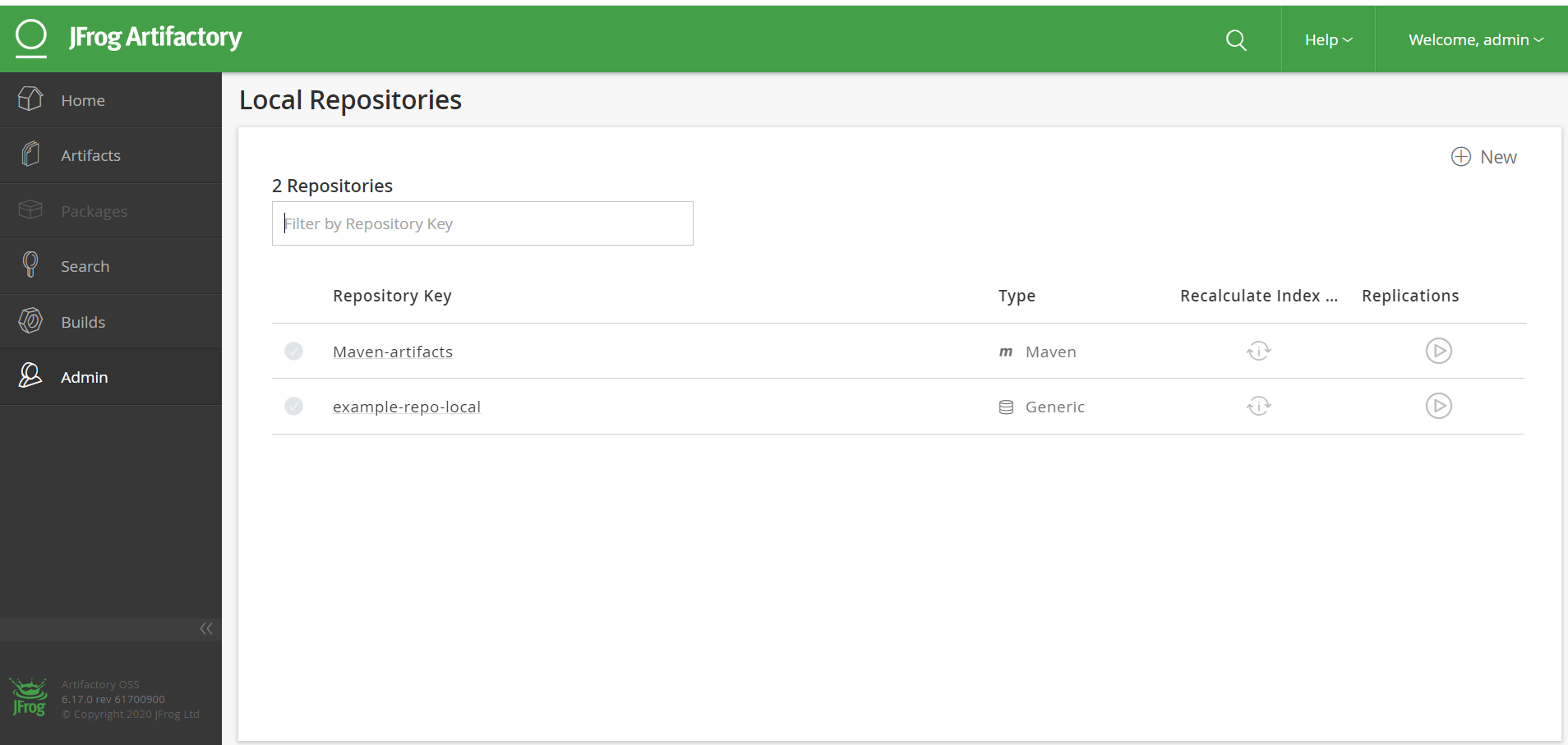
To delete repository , admin > Repositories” (Ex.”Local”) > click the x on the right end of the repository you want to delete

JFrog – Maven Integration
a. Upload artifact to JFrog manually
Build the maven project & get artifact
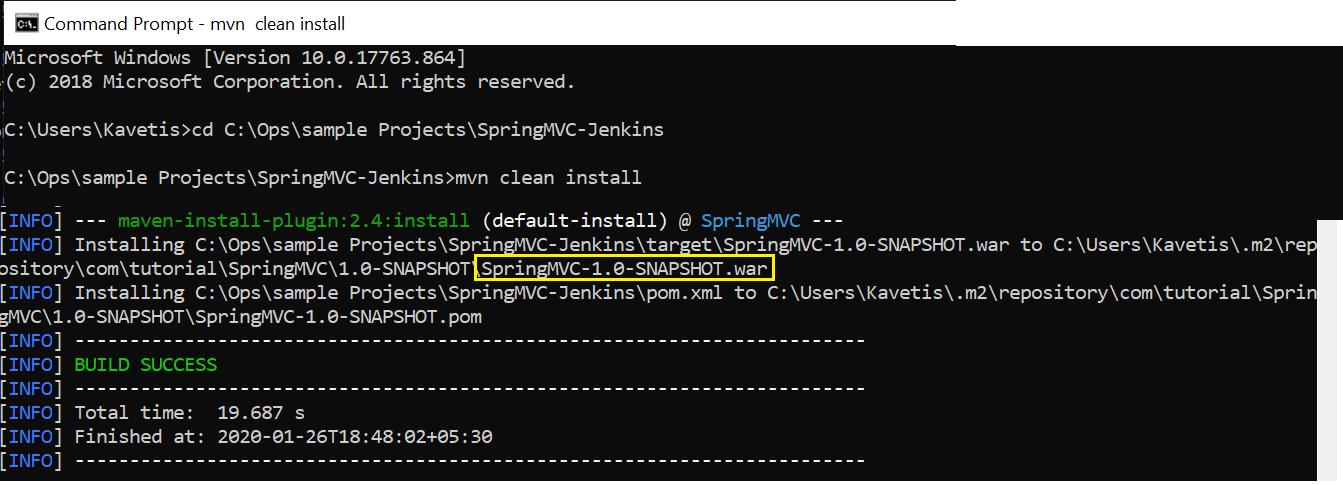
Open Artifacts > Select: Maven-artifacts > click Deploy button
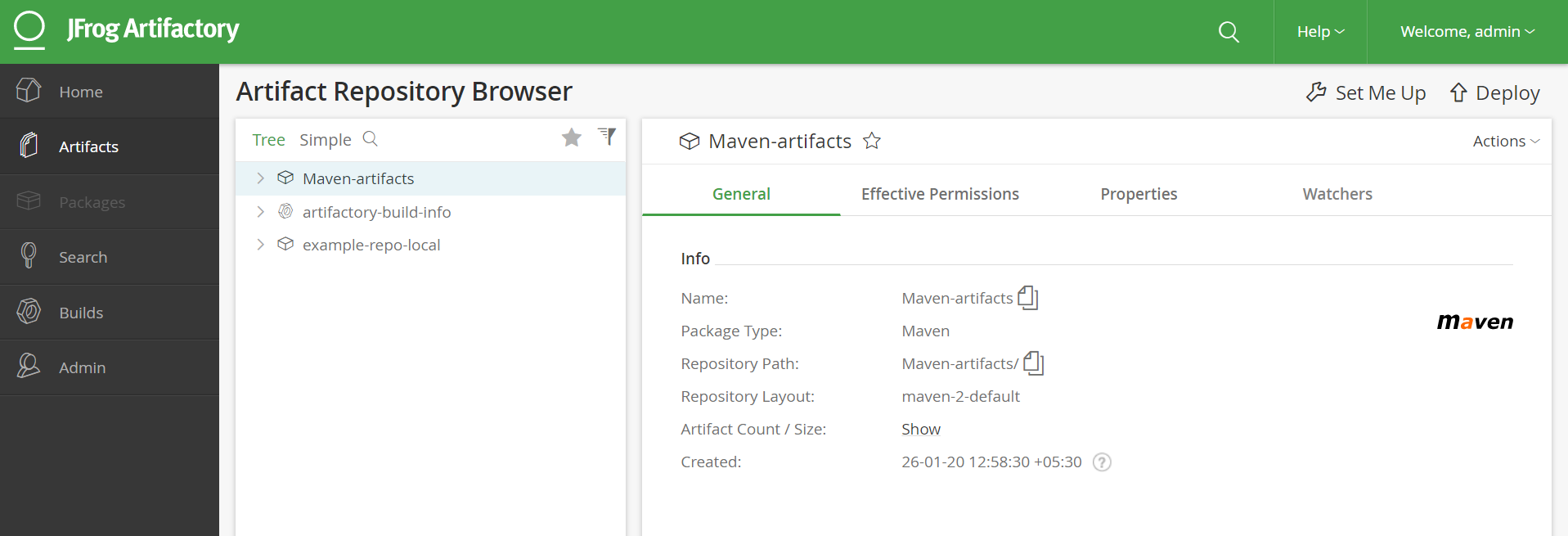
Browse & upload the File > Deploy
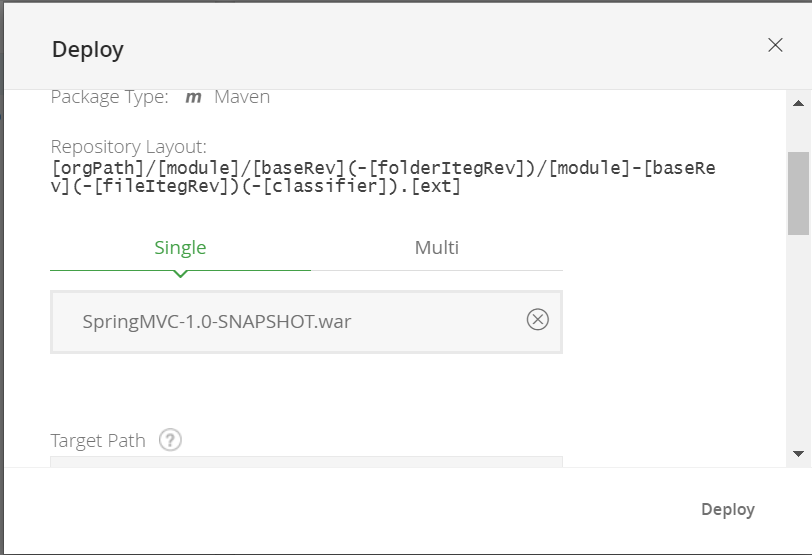
Now we can use this artficat in others projects by specifing maven dependency in pom.xml
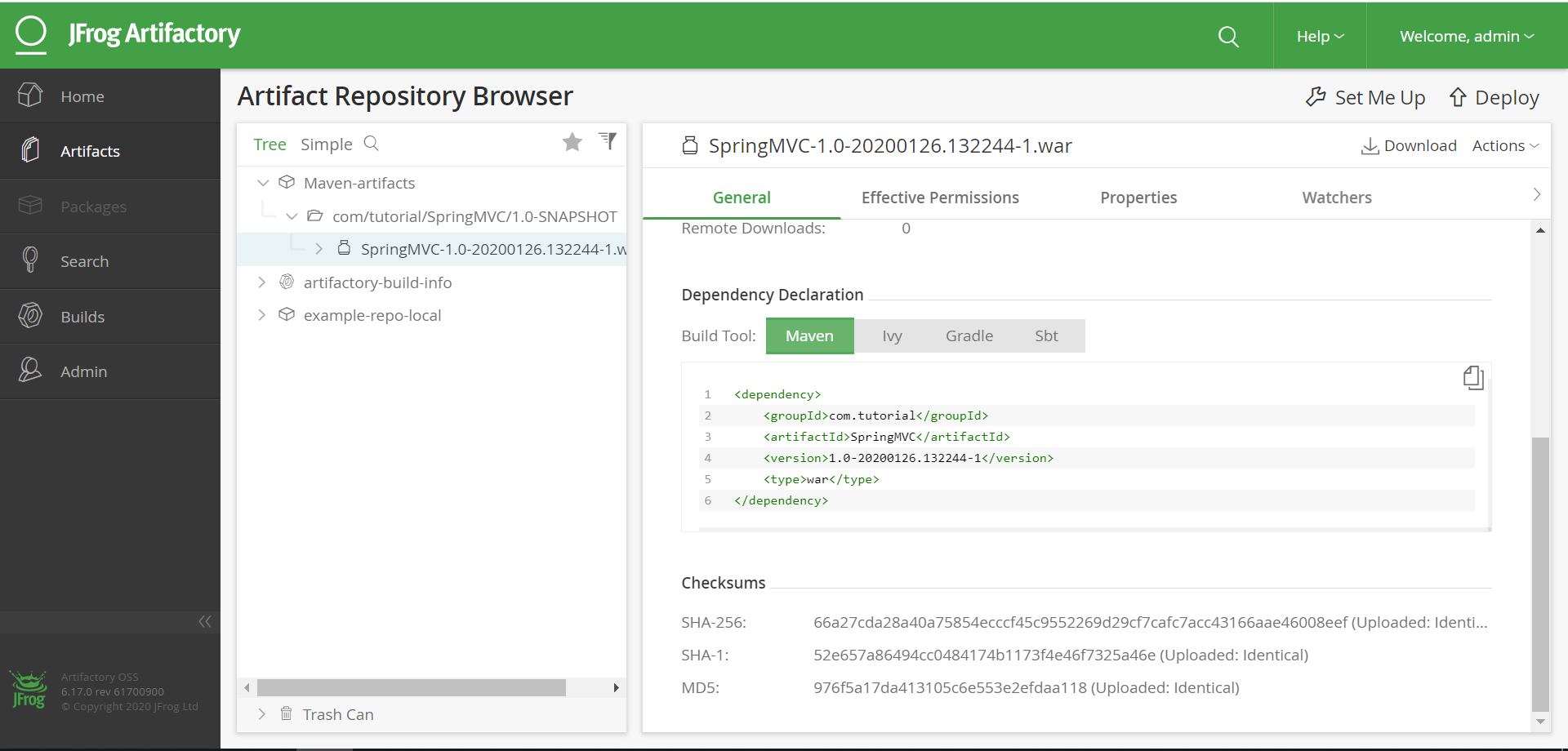
b. Upload artifact via maven Build
Go to JFrog home page > ARTIFACTS> choose the repository >Click on -Set me up” >Click on -Generate Maven Settings” > Download Snippet.
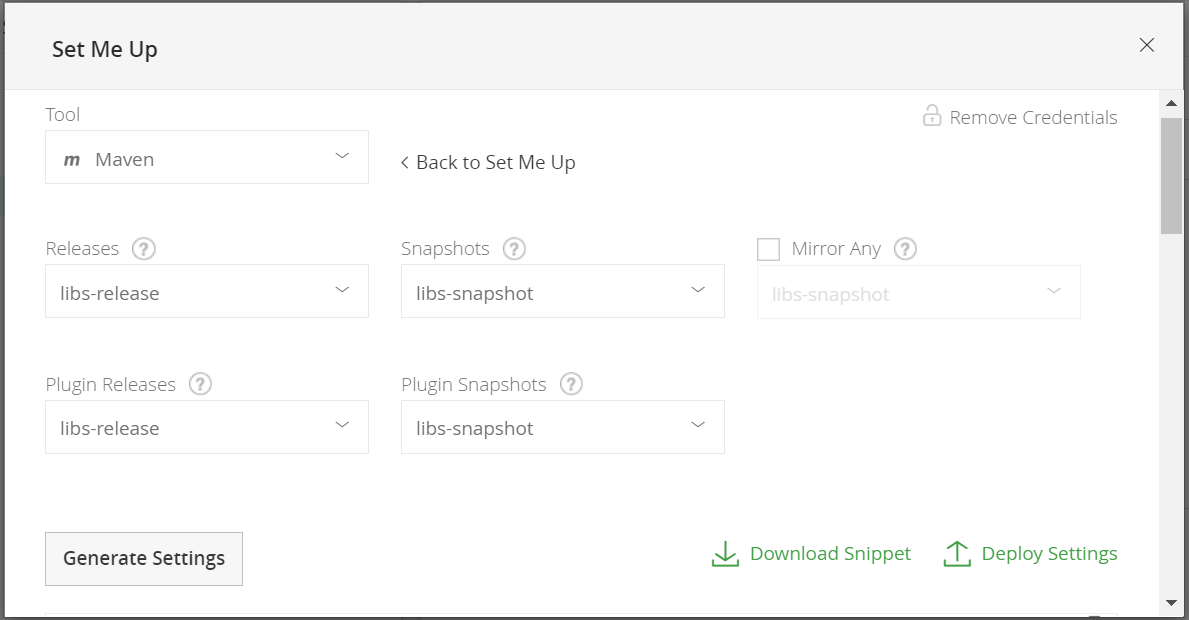
Save downloaded -settings.xml” file under the Maven Home directory (typically it is, user./home/.m2/settings.xml)

Open settings.xml & replace username/password from
<username>${security.getCurrentUsername()}</username>
<password>${security.getEscapedEncryptedPassword()!"AP3eyqG1vjaDmngxsHxxB3B9Uio"}</password>
To
<username>admin</username>
<password>123abcABC@</password>
Then, go into your JUnit-Maven directory, and add the following distributionManagement section to your pom.xml
<distributionManagement>
<repository>
<id>central</id>
<name>001403-releases</name>
<url>http://localhost:8081/artifactory/libs-release-local</url>
</repository>
</distributionManagement>
Now you can deploy the project by Running below command:
mvn clean deploy

Then go browse your snapshot repository and you will see your project’s artifact in there!
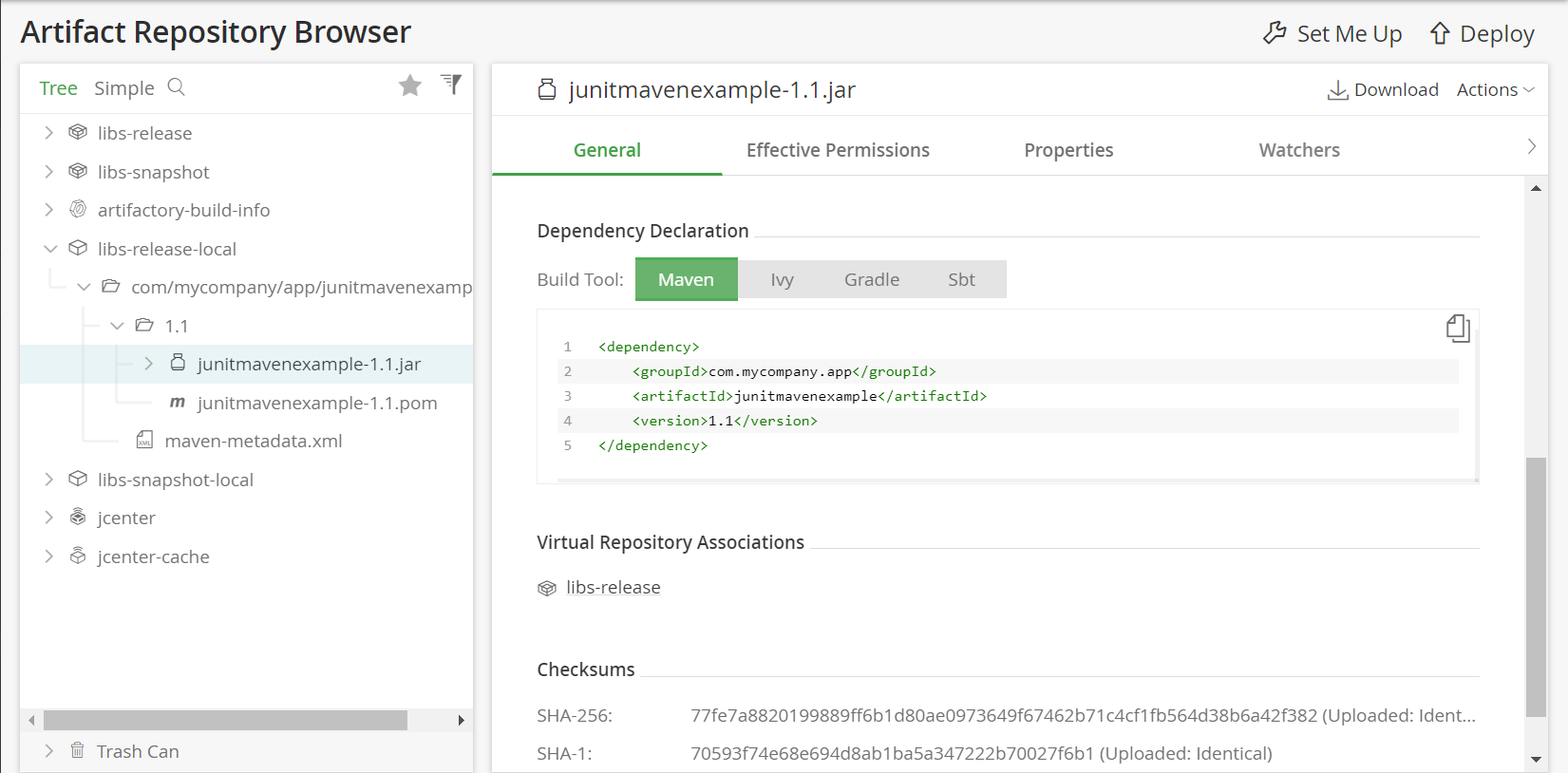
JFrog – Jenkins Integration
Add Artifactory Plugin to Jenkins
Go to Jenkins dashboard -> Manage Jenkins -> Manage Plugins -> Available ->
Artifactory -> Install without restart.
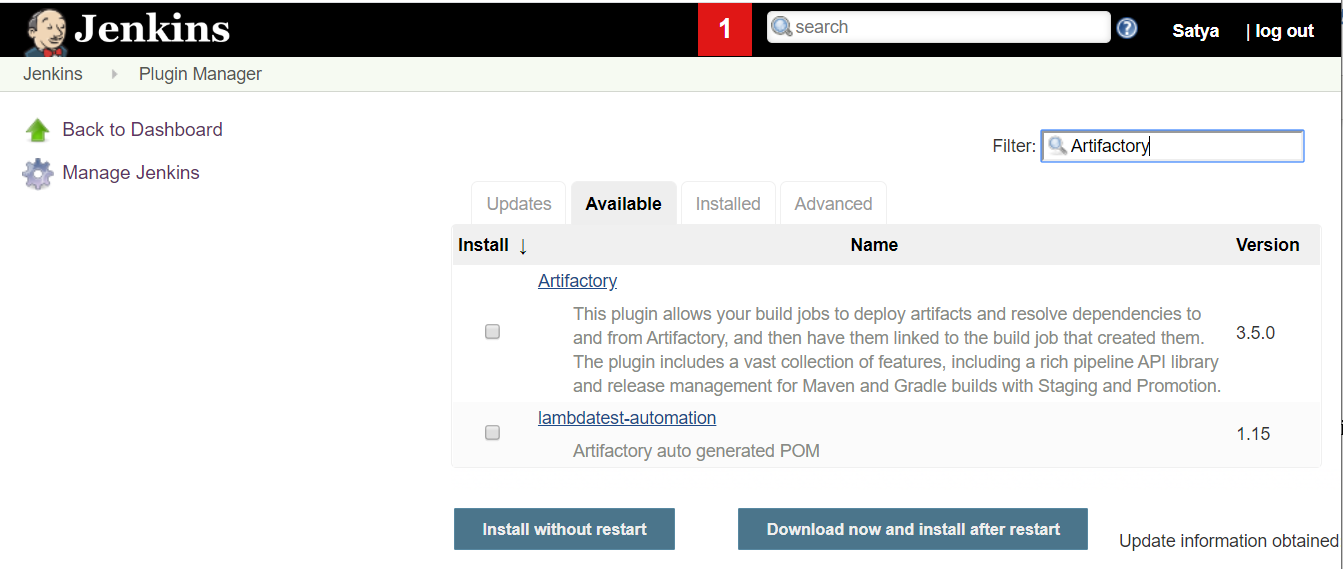
Configure Artifactory-related settings in Jenkins
Go to Jenkins dashboard -> Configure System ->Artifactory section ->Add
artifactory server -> provide the details -> Test the connection ->apply &
save
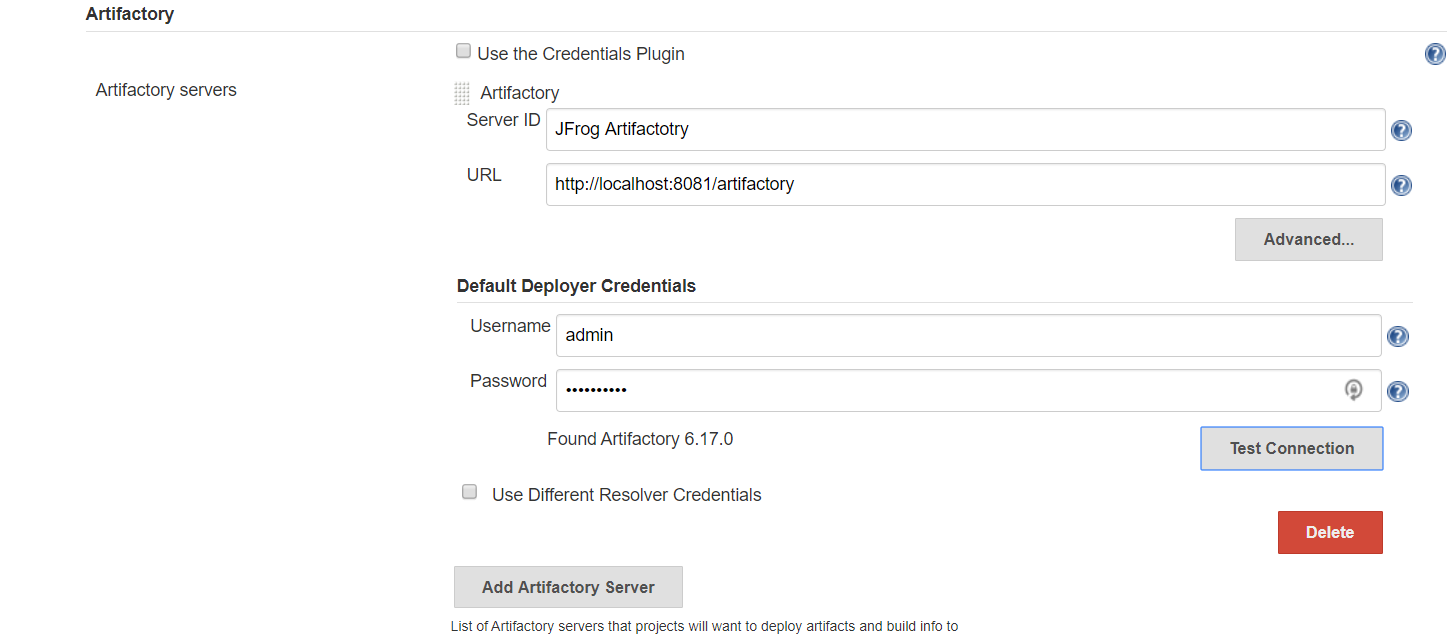
Configure Project : to creates package file after compiling all of the source files.
Go to Build Environment section -> Resolve artifacts from artifactory -> Click on refresh Repositories ->select the repository in release and snapshot field from the lists.
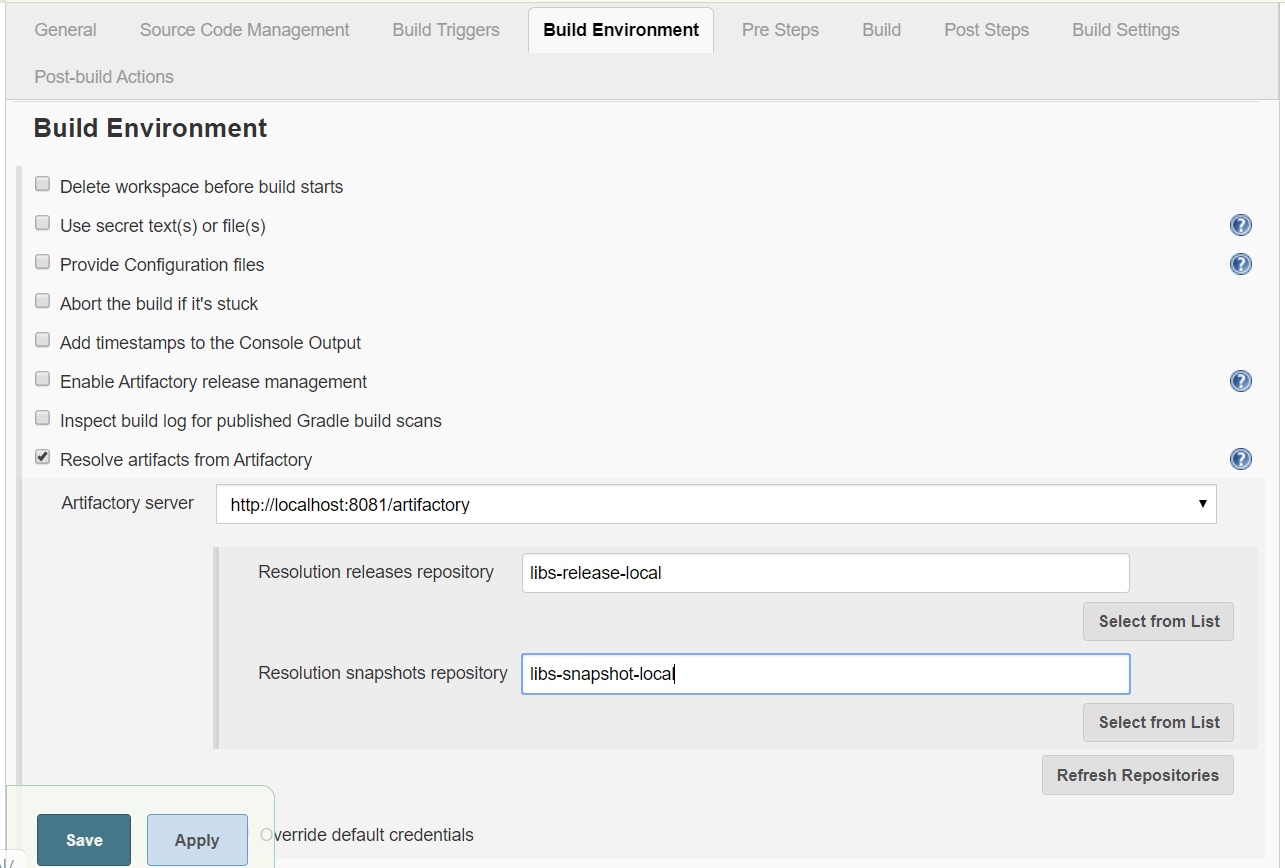
post-build section
Go to Add post-build section ->select deploy artifacts to artifactory ->
click on refresh -> choose the target releases and snapshot repository
(repositories created earlier) ->save

Click on Build now.
Jar files are resolved from the local repository or Artifactory.
check the package
Once the package is created, it is stored in artifactory too. Go in the
artifactory and check the package.
Ref.
https://devops4solutions.com/jfrog-artifactory-download-installation/
https://youtu.be/F-Tb0OFaaKQ?list=PLc2Tk7OAM5i6wtkHChsmj41xhXowHfWi3
https://devops4solutions.com/jenkins-jfrog-artifactory-integration/